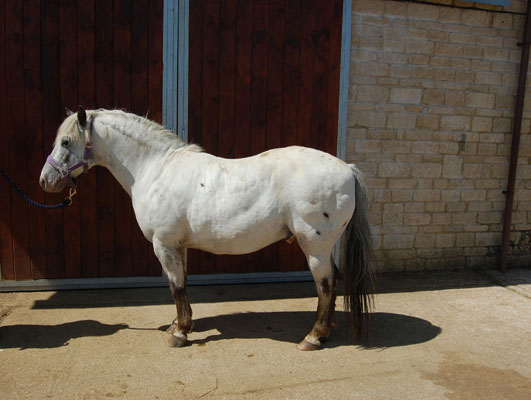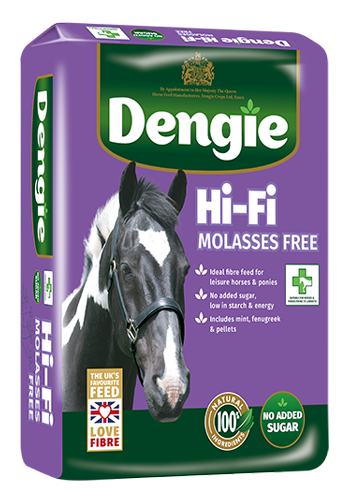What is EMS in Horses?
Article last updated: 14th June 2022
Equine Metabolic Syndrome (EMS) is a metabolic problem characterised by insulin dysregulation, abnormal adipose distribution (although not all horses with EMS are overwight) and altered levels of adipokines or fat hormones. Diffculty in achieving weight loss can also be a feature of EMS. The risk of laminitis is increased as a result of changes to the horse’s metabolism with environmental factors such as diet often being the final trigger for clinical signs to develop.

What are the symptoms of EMS in horses?
- fat pads and/or a cresty neck
- insulin dysregulation
- repeated incidents of laminitis
What causes EMS in horses?
- As a ‘syndrome’ there is no direct cause, but instead a number of factors that contribute to the disease
- Horses in their natural environment have a seasonal cycle of weight gain over the summer and weight loss over the winter. In the domestic environment, food is always available and this, combined with greater thermal protection and restricted exercise, means that some horses are very prone to gaining weight and developing insulin resistance (IR)
- Fat produces adipokine hormones and cytokines which are inflammatory mediators that decrease sensitivity to insulin and result in constant, low grade inflammation
Nutritional management for horses with EMS
- As obesity worsens IR, the primary aim is to encourage weight loss and maintain the horse at an ideal bodyweight
- Grazing should initially be eliminated until bodyweight is normal and recurrent laminitis under control

- Total feed and forage intake should initially be restricted to 1.5% of the horse’s bodyweight on a dry matter basis, but dropped to 1.25% of bodyweight if the horse is resistant to weight loss in the short term. 1.5% of bodyweight is the minimum level recommended for the long term management of good doers to maintain gut health and reduce the risk of other issues and diseases, such as colic and gastric ulcers
- Consider using straw to provide lower calorie forage – click here to read the latest advice on feeding straw
- Ideally, supplementary feed and forage should supply less than 12% NSC dry matter – this is the sum of the water soluble carbohydrate and starch added together
- Although soaking hay encourages loss of water soluble carbohydrate, it should not be relied upon to make high NSC hay ‘safe’ because results are highly variable
- Providing a balanced diet with respect to vitamins and minerals is especially important, as EMS horses are in an inflammatory state and many vitamin and minerals are important antioxidants
- Longer term grazing may be allowed, but should be restricted by area or with use of a grazing muzzle to manage NSC intake and bodyweight
- If sound, exercise regularly as this should help to improve insulin sensitivity
Feeds suitable for horses with EMS
Meadow Lite with Herbs
Ulser Lite
Hi-Fi Molasses Free
Hi-Fi Lite
Healthy Hooves
Healthy Hooves Molasses Free

Dengie’s ‘Healthy’ range of fibre feeds are nutritionally balanced fibre products and as such, when fed at the full recommended quantity, no additional supplementation is required.
For further information or friendly feeding advice about feeding a horse with EMS, email the Dengie nutrition team or call our Feedline on 01621 841188.
Case study – Managing a horse with EMS
Emma Williams got in touch to arrange a diet clinic after her horse, Jake, was diagnosed with EMS. “I keep him on a cattle farm” explained Emma, “where the grazing is fantastic but not ideal for a 15hh Connemara who’s a good-doer! He gradually piled on the pounds and before I knew it he was very round!”

Recommended Diet
Feed – 2kg of Healthy Hooves Molasses Free, split over two feeds a day
Forage – 3kg of soaked hay
Grazing – restricted by wearing a grazing muzzle
“I can’t believe the difference in him” says Emma on Jake’s transformation. “He’s lost over 99kg which is incredible! It’s been hard work, I have to continually monitor his diet and management but I’ve stuck with it – he looks and feels fantastic! I attended some local shows last summer where I showed off his new figure and was delighted to be winning rosettes!”
To read Jake’s story in full click here




